A complete tourist and cultural guide of
Rajasthan
A regal state celebrated for its majestic forts, golden deserts, and vibrant traditions
Rajasthan, the “Land of Kings,” enchants visitors with its opulent palaces, sprawling deserts, and rich cultural tapestry. From the amber hues of Jaipur to the serene lakes of Udaipur, the state blends royal heritage with natural splendor. The cradle of folk music, dance, and artisan crafts, Rajasthan offers a journey through India’s regal past and living traditions. Whether exploring ancient citadels, camel safaris, or bustling bazaars, Rajasthan promises an unforgettable experience.
Discover Rajasthan - Tourist Attractions
Rajasthan dazzles with its forts, deserts, and wildlife. From the Thar Desert’s golden dunes to lush Aravalli hills, it captivates history buffs, adventurers, and culture enthusiasts alike.
Jaipur (Pink City)
Udaipur (City of Lakes)
Jodhpur (Blue City)
Jaisalmer
Pushkar
Ranthambore
Mount Abu
Chittorgarh
Heritage of Rajasthan

Rajasthan boasts 6 UNESCO World Heritage Sites, including: Hill Forts: Chittorgarh, Kumbhalgarh, Ranthambore, Amber, Jaisalmer, Gagron. Jantar Mantar (Jaipur): Ancient astronomical observatory. Keoladeo National Park: Renowned bird sanctuary. Jaipur City: Recognized for its grid architecture and pink façades. The state’s heritage is reflected in its Rajput-Mughal architecture, intricate frescoes, and grand havelis. Don’t miss: Stepwells like Chand Baori (Abhaneri). Temples: Dilwara Jain Temples (Mount Abu), Karni Mata Temple (Deshnok).
The Performing Art of Rajasthan
Rajasthan’s performing arts are a vibrant reflection of its history, spirituality, and desert ethos. From soul-stirring folk ballads to hypnotic dances, these art forms have been preserved for centuries by nomadic tribes, royal patrons, and rural communities. Here’s a deeper dive into its iconic music and dance traditions:
Music Form
A soulful blend of desert mystique and devotion, where Manganiyar and Langa communities weave tales of love, valor, and Sufi lore through haunting kamaicha melodies, rhythmic dholak beats, and the ancient Ravanahatha’s mournful strings.

Folk Music
Manganiyar and Langa communities’ soulful ballads.
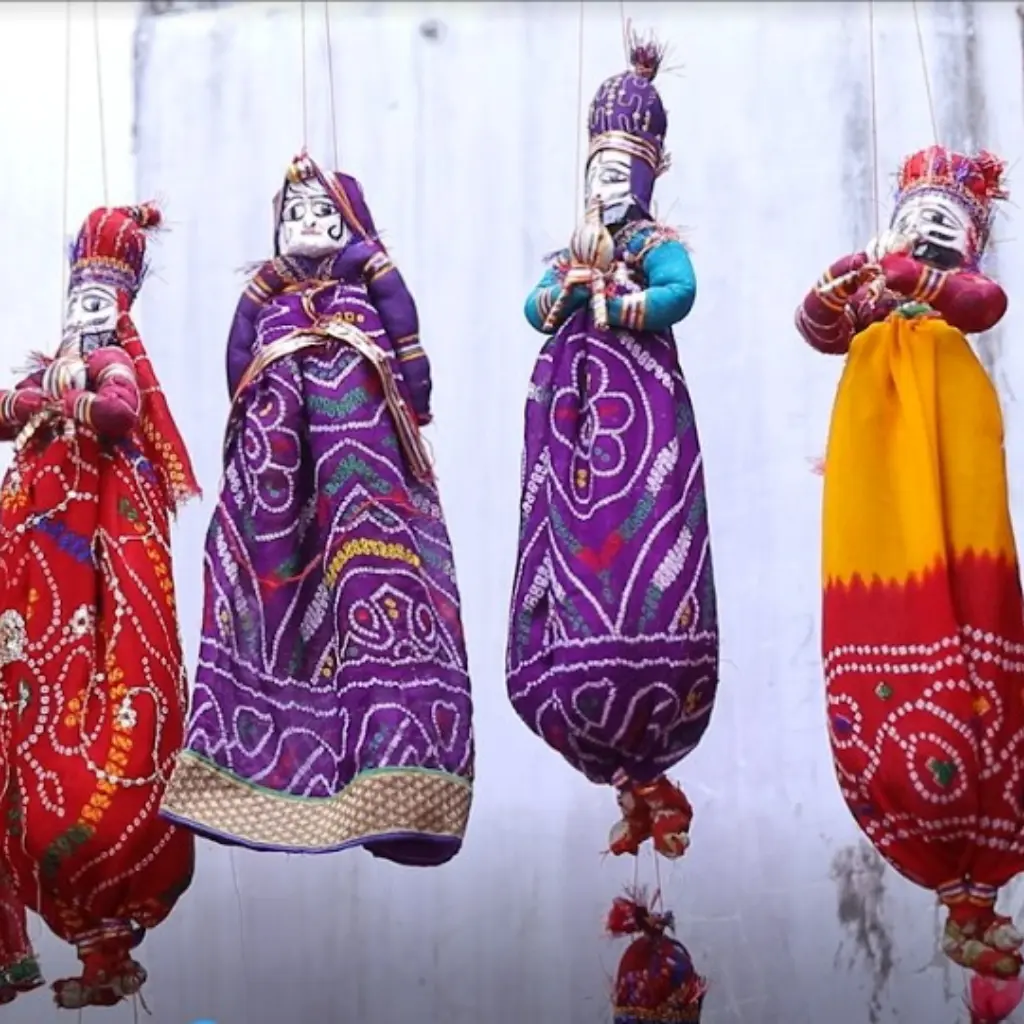
Puppetry (Kathputli)
String puppet shows narrating folklore.
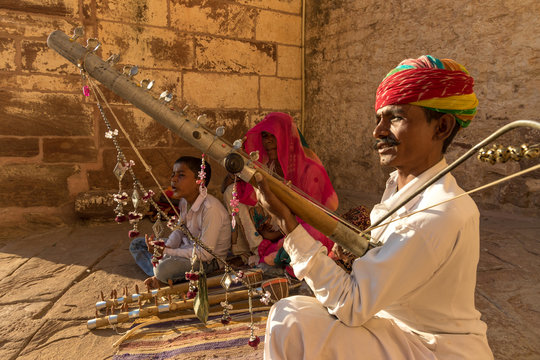
Ravanahatha
Ancient fiddle instrument played by bards.
Dance Form
A whirlwind of color and symbolism—from Ghoomar’s twirling veils celebrating womanhood to Kalbeliya’s serpentine grace and Bhavai’s daring pot-balancing acts, each dance echoes rituals, seasons, and Rajasthan’s indomitable spirit.
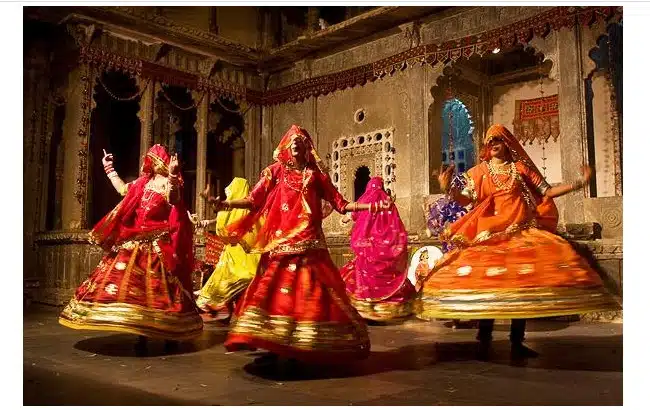
Ghoomar
Graceful women’s dance with swirling veils.
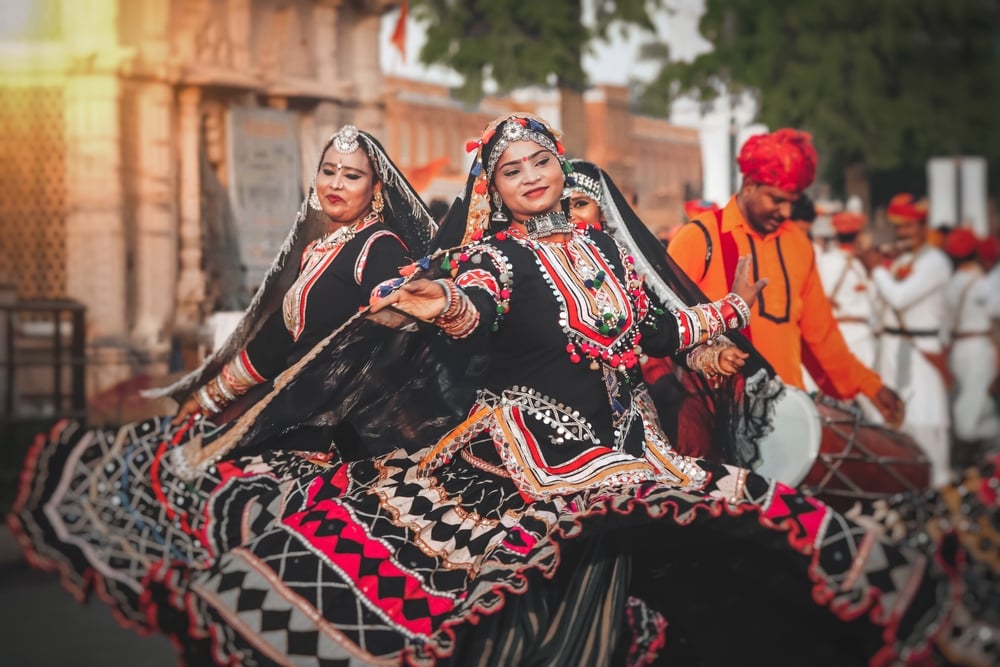
Kalbeliya
Energetic dance by the Kalbeliya tribe, mimicking snakes.
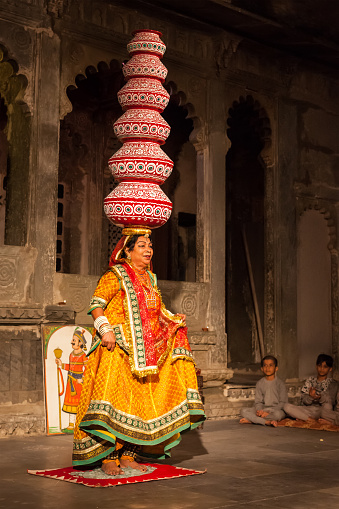
Bhavai
Acrobatic folk drama balancing pots on heads.
Others dance forms – Teratali: Ritualistic dance with cymbals, dedicated to deities.
Festivals and Celebrations
A tapestry of vibrant traditions, Rajasthan’s festivals burst with camel fairs, folk revelry, and sacred rites. From the Pushkar Camel Fair’s colorful chaos to Jaisalmer’s Desert Festival under golden dunes, they celebrate desert life. Gangaur and Teej honor goddesses with rhythmic devotion, while Urs Festival echoes Sufi unity—each event a timeless ode to Rajasthan’s spirited soul.
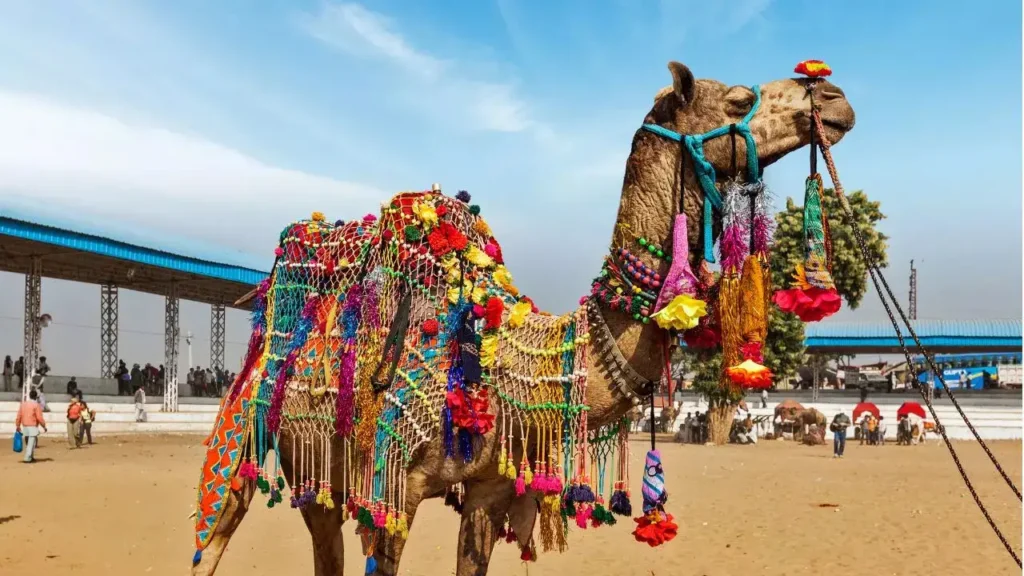
Pushkar Camel Fair
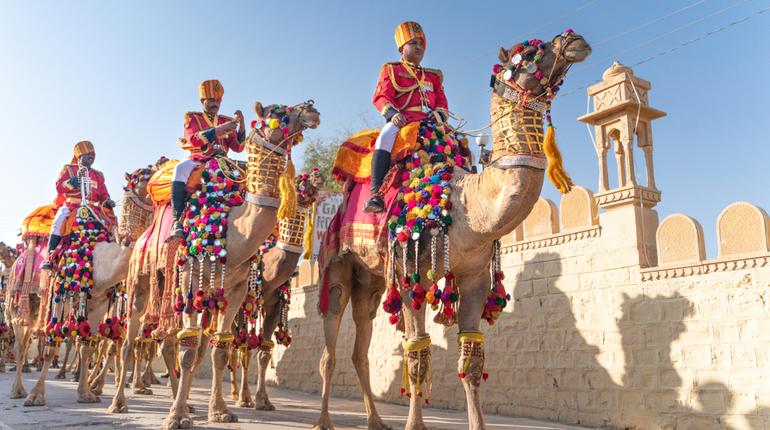
Desert Festival (Jaisalmer)
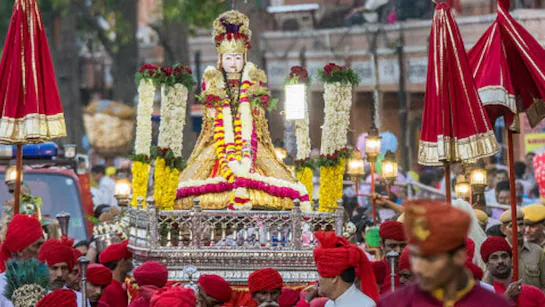
Gangaur & Teej
Other Celebrations and Festivals, and Cel—Urs Festival (Ajmer): Sufi devotional songs at Khwaja Moinuddin Chishti’s shrine.
Rajasthani Cuisine
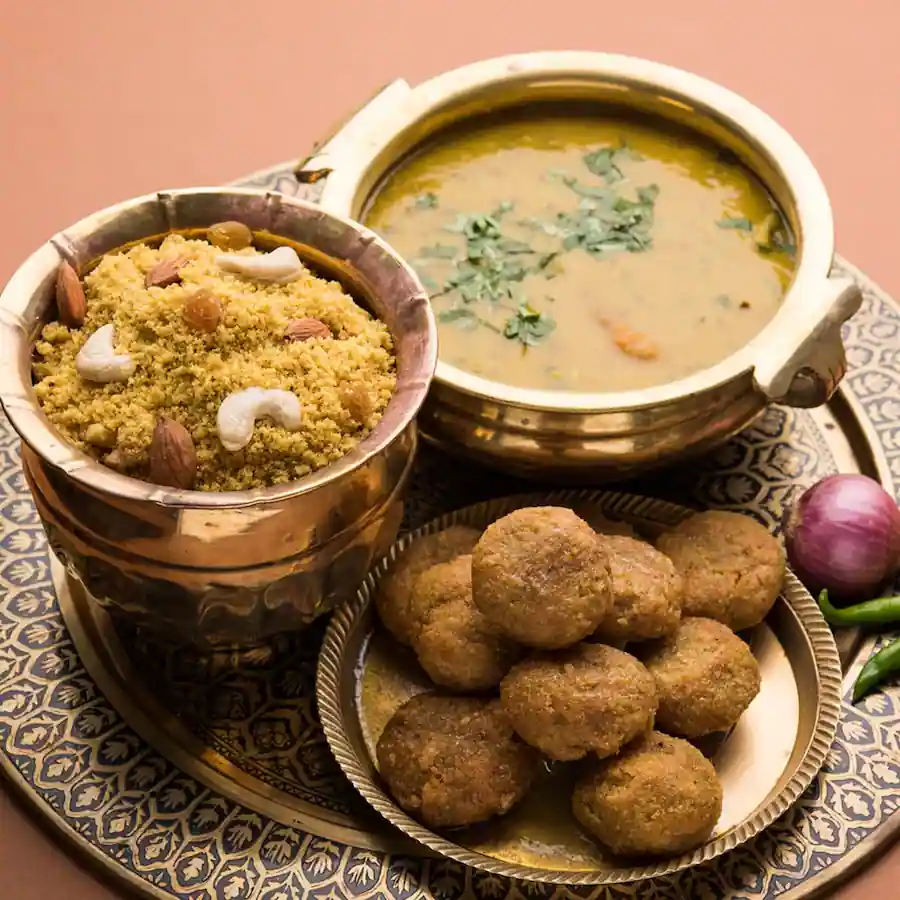
Dal Baati Churma

Laal Maas

Gatte ki Sabzi
A royal feast of bold flavors and rustic traditions, where fire-kissed spices meet sweet indulgences. From warrior-style Laal Maas to melt-in-mouth Ghewar, every dish tells a tale of desert resilience and regal heritage.
- Dal Baati Churma: Lentils, baked wheat balls, and crushed sweetened bread.
- Laal Maas: Spicy mutton curry with Mathania chilies.
- Gatte ki Sabzi: Gram flour dumplings in yogurt gravy.
- Ghewar & Mawa Kachori: Iconic sweets from Jaipur and Jodhpur.
- Kulhad Chai: Spiced tea served in clay cups.
Popular Shopping Items
A treasure hunt of vibrant textiles, exquisite handicrafts, and glittering jewels, where every bazaar whispers tales of royal artistry and desert charm.
Textiles: Bandhani, Leheriya tie-dye, Jaipuri quilts.
Handicrafts: Blue Pottery (Jaipur), Kundan jewelry, Miniature paintings.
Footwear: Mojari (embroidered leather shoes).
Camel Leather Goods: Bags, journals (Jaisalmer).
Best shopping places: Johari Bazaar (Jaipur), Sadar Bazaar (Jodhpur), Hathi Pol Bazaar (Udaipur).
Textiles
Handicrafts
Footwear
Camel Leather Goods
Evolution of Rajasthan
⇒ Ancient Era: Inhabited by Indus Valley civilizations; ruled by Rajput clans like Sisodias, Rathores, and Kachwahas.
⇒ Colonial Era: Princely states under British suzerainty.
⇒ Medieval Period: Rajput resistance against Mughals; rise of fortified cities.
⇒ Post-Independence: Merged into India in 1949, retaining royal legacy.
Safety Measures and Tips
- Desert Safaris: Avoid midday heat; carry water, sunscreen, and wear hats.
Temple Etiquette: Dress modestly; cover head at certain shrines (e.g., Karni Mata).
Transport: Use govt-approved taxis; avoid unlicensed guides.
Emergencies: Police (100), Ambulance (108), Tourist Helpline (1363).
Rajasthan Blogs
- Rajasthan Cultural guide
- Places to visit in Rajasthan
- Places to visit nearby Rajasthan
- India’s most popular destination
- India’s archaeological marvels
Recommended articles
- Rajasthan Cultural guide
- Places to visit in Rajasthan
- Places to visit nearby Rajasthan
- India’s most popular destination

